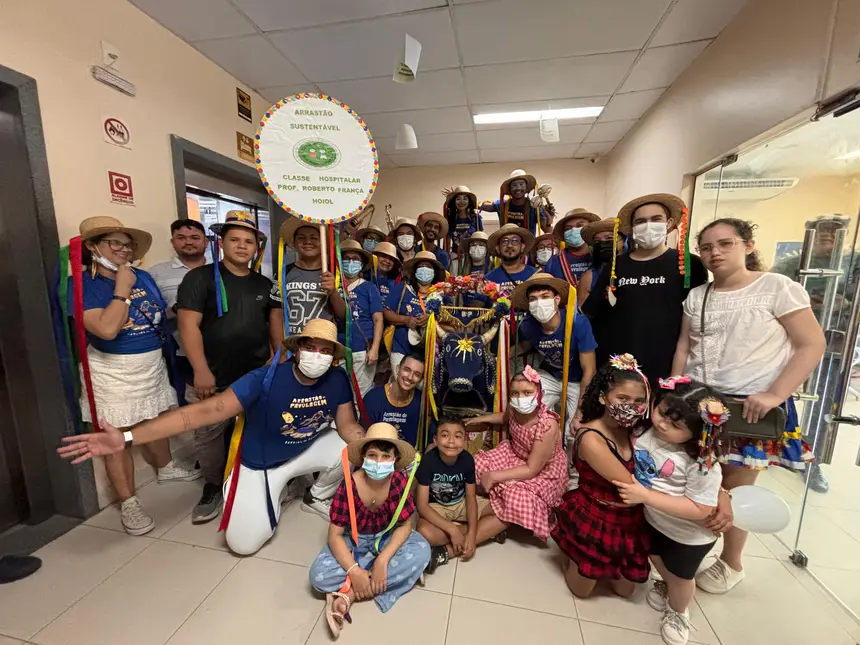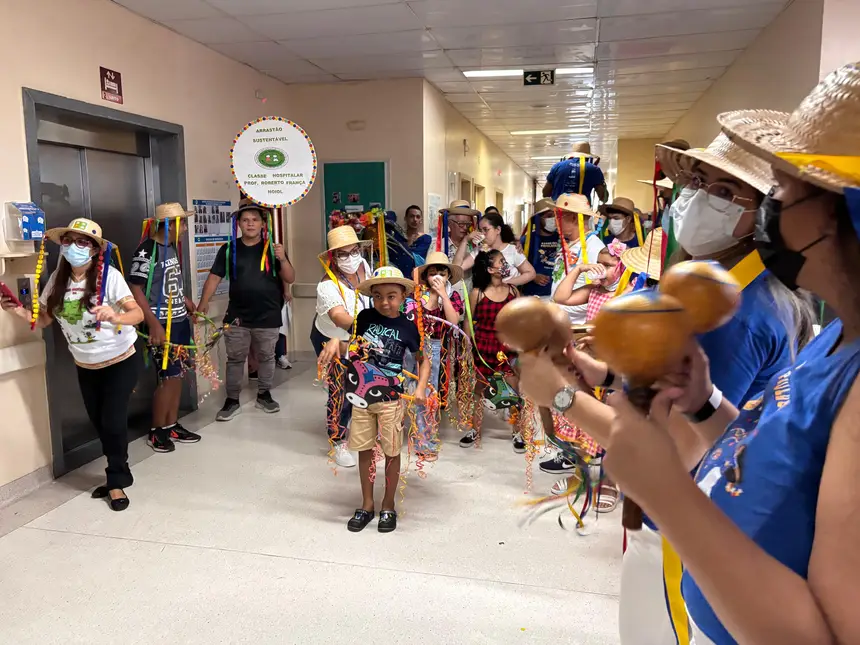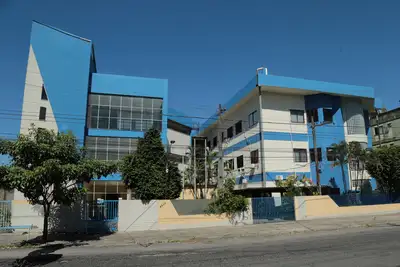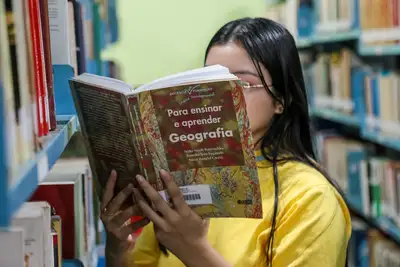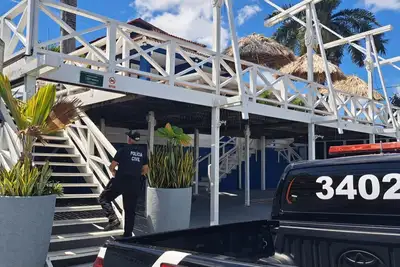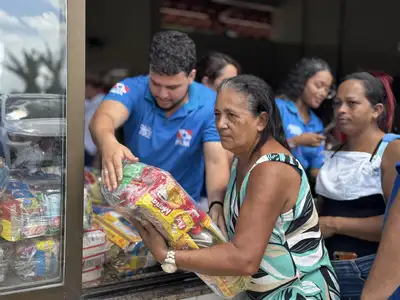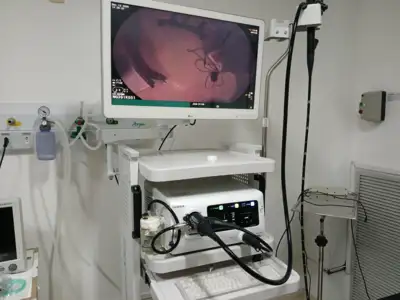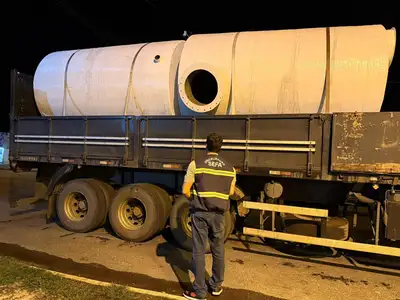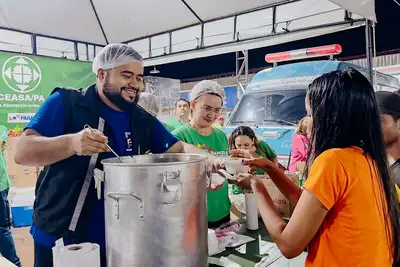When the Blue Star Ox enters the Children's Oncology Hospital, joy celebrates together
Procession brings popular culture and promotes inclusion for children and adolescents undergoing cancer treatment
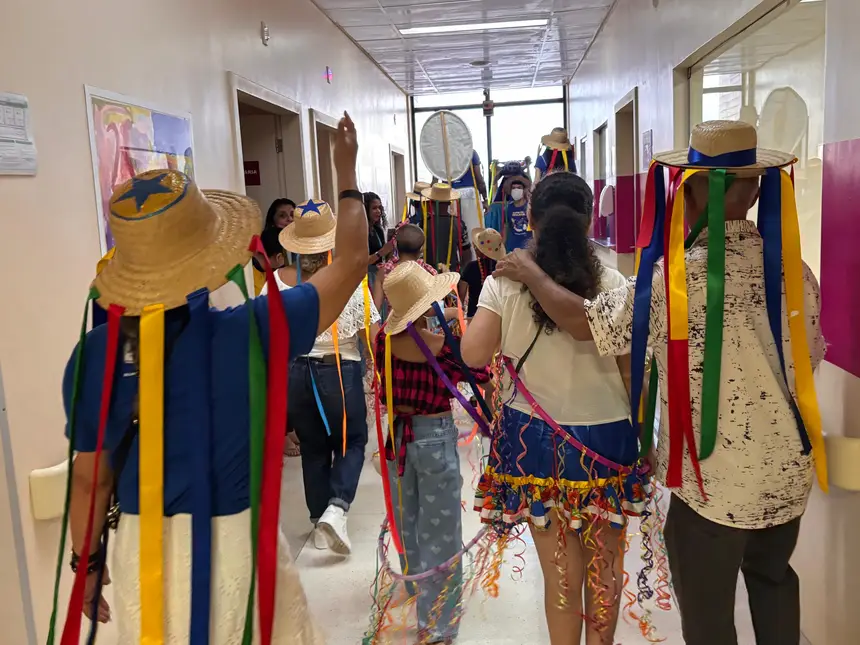
This Friday morning (23) was not ordinary at the Octávio Lobo Children's Oncology Hospital (Hoiol). In the hospital corridors, the contagious sound of drums, maracas, reco-recos, and trumpets announced the ox tunes. Colorful ribbons swayed in the air, and smiles appeared behind masks and sheets. It was the Arraial do Pavulagem arriving with its Blue Star battalion, in a wave of popular culture, joy, and social responsibility at the opening of the institution's June festivities.
For the approximately 80 patients who witnessed the event, including hospitalized children and students from the Hospital Class, more than a folkloric spectacle, the procession provided a reunion with joy. With each step of the ox, with each beat of the percussion, a moment of lightness unfolded amidst the routine of exams, medications, and social isolation. “It’s as if we forget for a moment that we are in a hospital,” said Nilson Marques, 19, who is undergoing treatment for lymphoma and is in the 1st and 2nd grades in the Youth and Adult Education (EJA) modality. “We smile, sing, have fun. This is very good for the mind and the heart.”
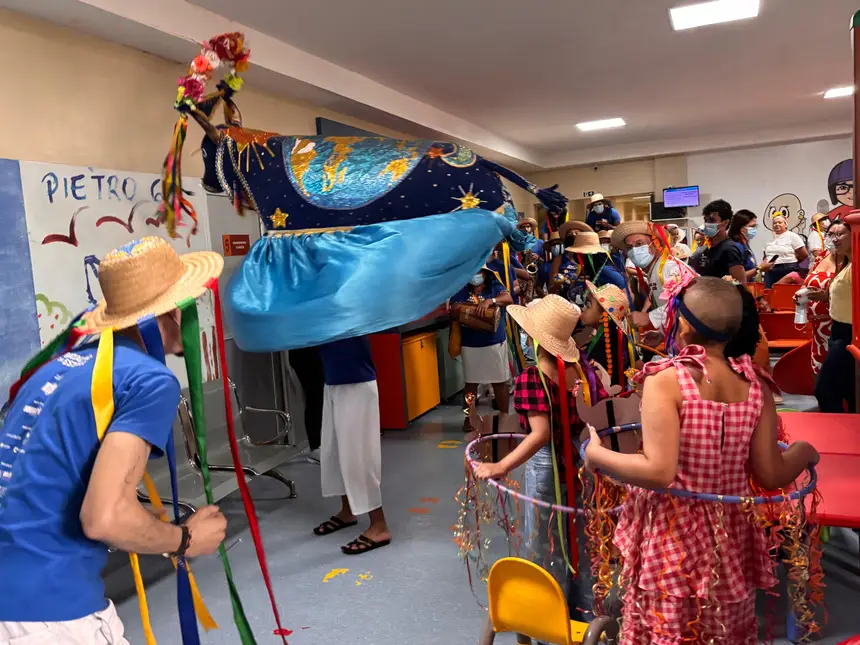
The action is not new. Since 2015, the Arraial do Pavulagem collective has brought the procession to the hospital as part of the institution's June calendar. The partnership, which has become a tradition, represents more than a festive moment. It is part of a serious project to humanize the hospital environment, articulated by health professionals, educators, and volunteers who understand that caring also means evoking emotions.
For Natacha Cardoso, coordinator of Humanization at Hoiol, bringing popular culture into the hospital unit has an impact beyond entertainment; it also enhances the educational context of the Hospital Class, where the proposal is to integrate knowledge through interdisciplinarity. “We bring Amazonian culture into the classroom, and the students learn while playing. It’s a playful and affectionate way to connect knowledge and identity. For hospitalized patients and staff, the presence of the Blue Star ox represents a breath of well-being and joy; the colorful ribbons, the music, and the movement infect everyone around.”
According to her, some cannot leave their beds but eagerly await the moment. “We notice the children sitting by the door of their rooms, waiting for the ox to pass; of course, the safety of the patients is always a priority. Before any action with external volunteers, the humanization team coordinates with the nursing staff to ensure that everything occurs with the utmost care. Therefore, half an hour before the activity, we already knew which floors could receive the battalion. This way, we managed to bring the party safely, promoting a unique moment of interaction, smiles, and lightness for everyone living the hospital routine,” she emphasized.
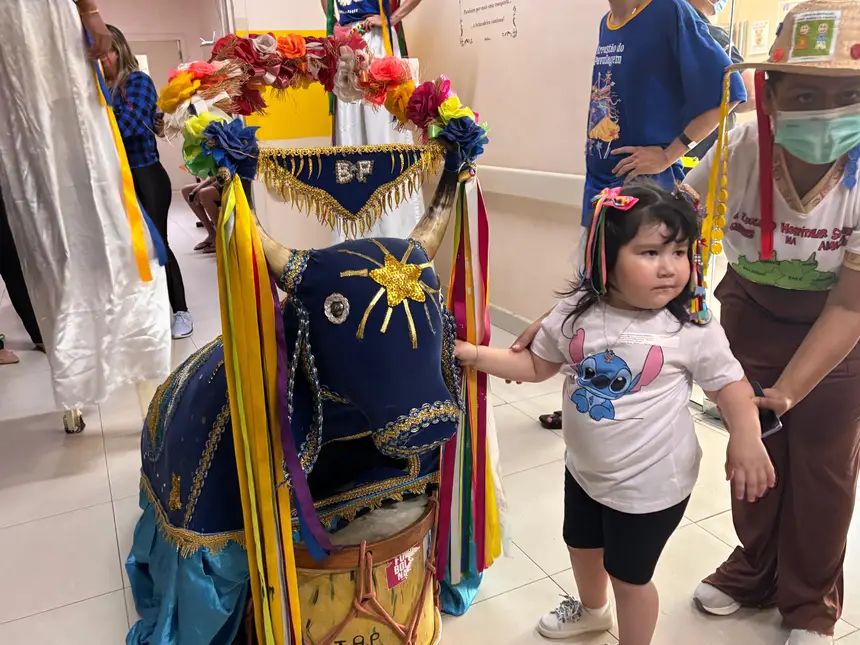
“Many of our students come from the countryside and do not have contact with all this cultural diversity. The Arraial brings a piece of our identity into the hospital. They learn, recognize themselves, and feel part of something bigger,” said Professor Marcos Moraes, head of Mathematics at the Hospital Class Prof. Roberto França, which is the result of a technical cooperation agreement with the State Department of Education (Seduc). Through the Hospital and Home Educational Service Program (AEHD), linked to the Special Education Coordination (Coees) of Seduc, inclusive actions are guaranteed that respect everyone's right to education, culture, and the enchantment of knowledge.
Learning with body and soul - In the rhythm of the ox, the quadrilha, and the carimbó, the children also learn. Popular culture, inserted in an interdisciplinary way into the activities of the Hospital Class, develops autonomy, self-esteem, and identity. Young Nilson summarizes what it is like to live culture in an oncology treatment environment. “We spend a lot of time here. If it weren’t for these activities, life would just be gray. But with the Arraial, everything turns into color, sound, and hope,” he stated.
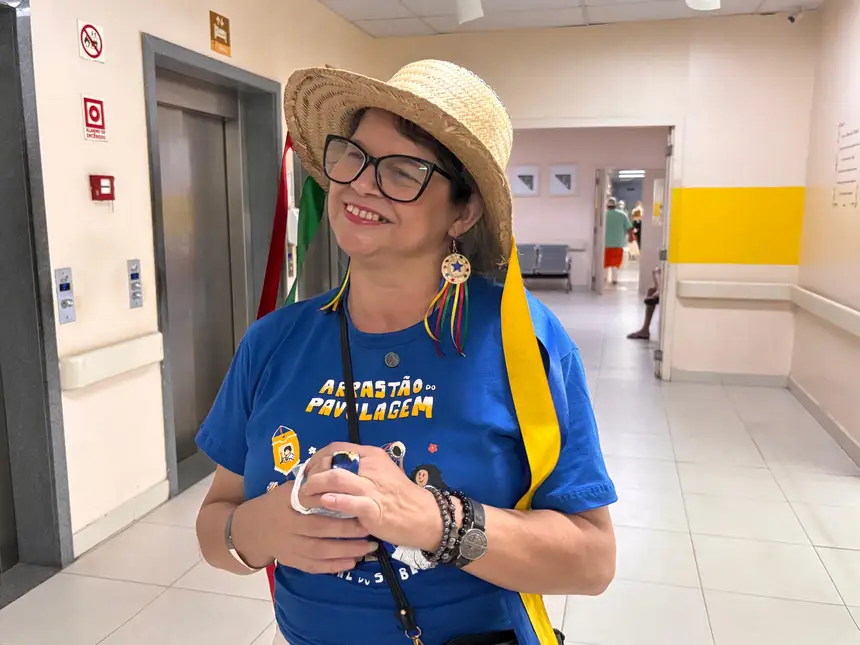
Silvana Pimentel, coordinator of Arraial do Pavulagem, spoke with emotion about the collective's participation in the hospital. “Today we came with about 24 performers, but our battalion is made up of more than 1,200 people. Everyone would like to be here, but for safety and space reasons, we need to bring only a part. Still, each one who comes knows the importance of this moment. It is an immense joy for the Arraial to bring a bit of our popular culture, with ox tunes, carimbó, and quadrilha into the hospital. We come with open hearts because we know that here art is also care.”
“The Arraial do Pavulagem procession may last only a few hours, but what it leaves inside the children and adolescents, and within those who watch, is moving. The laughter of those undergoing treatment, the timid step of someone getting out of bed to see the ox, the interaction of parents with their children. All of this is part of something much bigger, because life goes on despite illness,” emphasized Sara Castro, the hospital's general director.
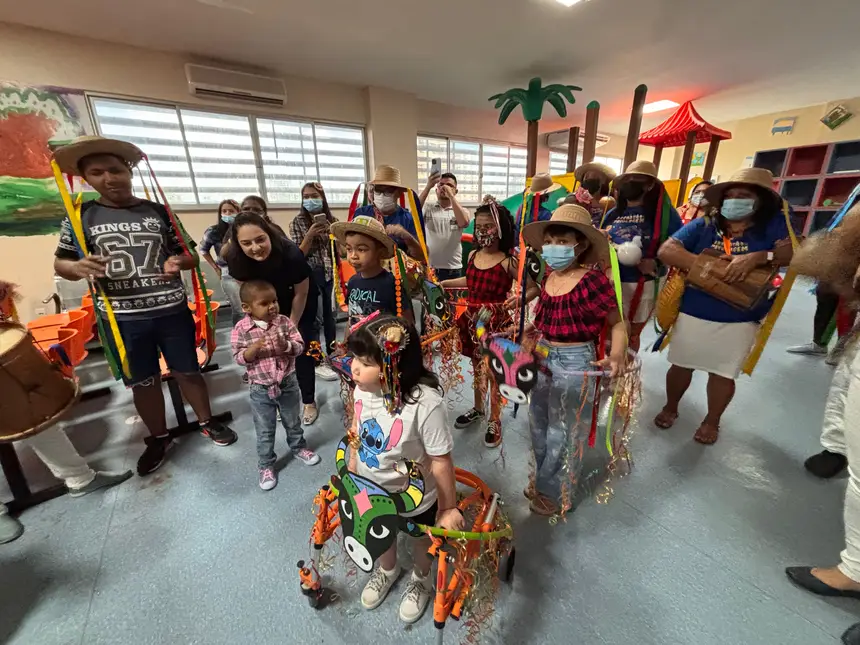
Service - Accredited as a High Complexity Unit in Oncology, the Octávio Lobo Children's Oncology Hospital is a reference in the Northern region for the diagnosis and specialized treatment of childhood and adolescent cancer, for ages 0 to 19 years. The unit is managed by the Instituto Diretrizes, under a management contract with the State Department of Public Health, and serves patients from the 144 municipalities of Pará and neighboring states.
Text: Leila Cruz- Ascom Hoiol


